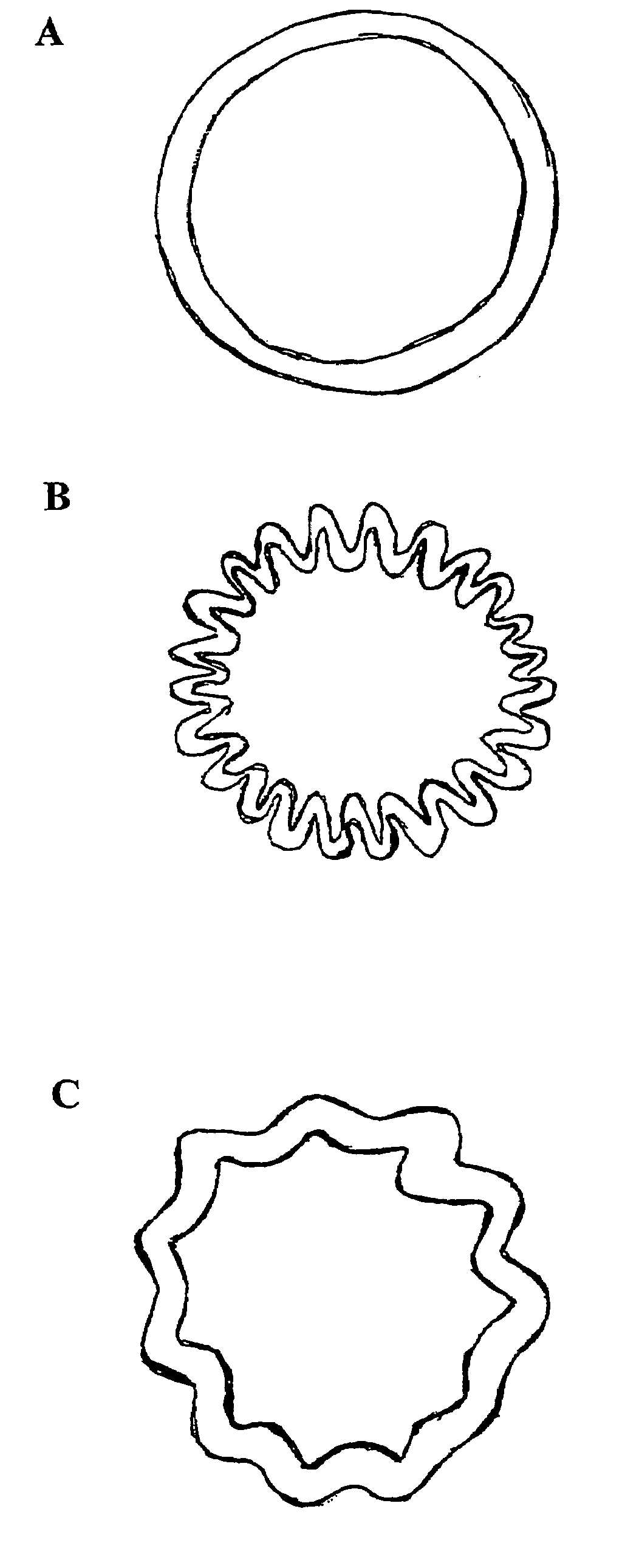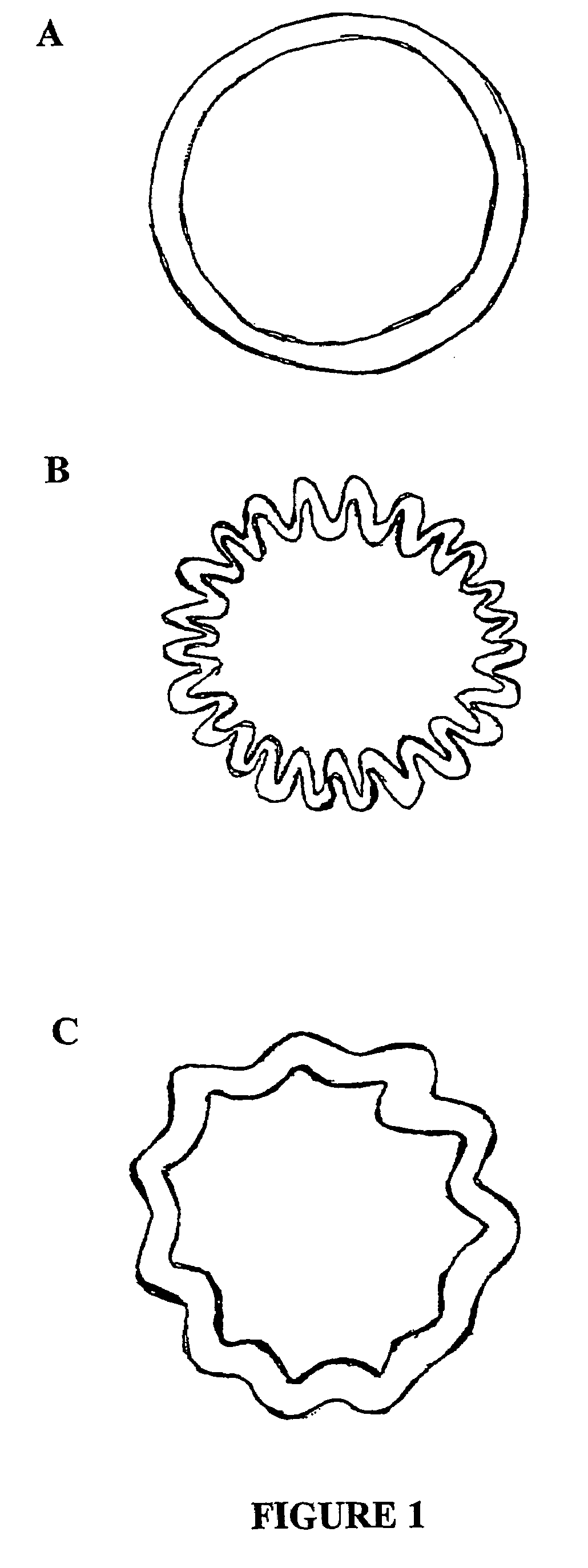Non-hormonal vaginal contraceptive
a vaginal contraceptive and non-hormonal technology, applied in the field of non-hormonal biodegradable intravaginal devices, can solve the problems of direct deleterious effect of sperm, long-term adverse metabolic risk of hormone-based contraceptives, and inability to carry infection in sexual relations, etc., to achieve no slippage problem, easy to use, and better family planning and health care
- Summary
- Abstract
- Description
- Claims
- Application Information
AI Technical Summary
Benefits of technology
Problems solved by technology
Method used
Image
Examples
example 1
Efficacy of Various Metal Salts on Sperm Motility
[0042]The effects of various concentrations of magnesium chloride, calcium chloride, ferrous sulfate, copper sulfate, and ferrous gluconate on the motility of human sperm were studied in vitro. As shown in FIG. 2, calcium chloride (CaCl2) and magnesium chloride (MgCl2) were spermiostatic at concentrations of 25 mM and 35 mM, respectively, whereas ferrous sulfate (FeSO4) completely arrested the motility of human sperm at a concentration of 10 mM. Copper sulfate and ferrous gluconate were spermiostatic at concentrations of 6.25 mM and 12.5 mM, respectively, as shown in FIG. 3. 25 mM solutions of copper sulfate and ferrous gluconate showed 93.3% and 97.4% immobilization of sperm, respectively, as shown in FIG. 3. 37.5 mM solutions of both reagents completely immobilized all the sperm, shown in FIG. 3. However, in the presence of the dihydrate form of ferrous gluconate, the spermiostatic effect was immediate. At lower concentrations of al...
example 2
Effect of Various Concentrations of Ascorbic Acid on the Viscosity of Human Cervical Mucus
[0045]At the commencement of the menstrual cycle, cervical mucus has a tight honey-comb cellular structure with a channel diameter of 2-6 mμm, which forms an impenetrable barrier to sperm. At midcycle, the channel diameter is 30-35 mμm in order to allow the sperm to pass. At the luteal phase, the cellular structure again contracts to 2-6 mμm, and the mucus becomes more viscous (WHO Laboratory Manual for the Examination of Human Semen and Sperm-cervical Mucus Interaction, Ch. 5:51-59 (1999), which is hereby incorporated by reference in its entirety). L-ascorbic acid is an antioxidant, transfers electrons, and acts as a reducing agent for disulfide (-S—S-) bonds of mucopolysaccharides of glycoproteins forming the cervical mucus, thus changing the mucus from open cellular structure found at midcycle of the menstrual period to the closed cellular structure to form an impenetrable barrier for sperm....
example 3
Three Generations of Biodegradable Matrices and their Controlled Release of Ferrous Gluconate
[0060]Three generations of biodegradable matrices impregnated with dihydrate ferrous gluconate were designed and tested for release profiles and efficacy on sperm motility.
[0061]The first generation matrix tested consisted of an aliphatic polyester copolymer from PLA and poly (ε-caprolactone) containing 24% ferrous gluconate by weight. Aliphatic polyesters have a proven record in the biomedical field, predictable biodegradation properties, FDA approval, and commercial availability. The first generation matrix was the simplest design for determining whether the concept of controlled release of spermiostatic agents from biodegradable substrates would be feasible and warrant additional studies.
[0062]The release data from the first generation matrix prompted the development of a sandwich design, which was used for the second generation matrix. The purpose of this sandwich configuration was to en...
PUM
| Property | Measurement | Unit |
|---|---|---|
| time | aaaaa | aaaaa |
| time | aaaaa | aaaaa |
| time | aaaaa | aaaaa |
Abstract
Description
Claims
Application Information
 Login to View More
Login to View More - R&D
- Intellectual Property
- Life Sciences
- Materials
- Tech Scout
- Unparalleled Data Quality
- Higher Quality Content
- 60% Fewer Hallucinations
Browse by: Latest US Patents, China's latest patents, Technical Efficacy Thesaurus, Application Domain, Technology Topic, Popular Technical Reports.
© 2025 PatSnap. All rights reserved.Legal|Privacy policy|Modern Slavery Act Transparency Statement|Sitemap|About US| Contact US: help@patsnap.com



